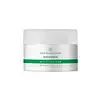What's inside
What's inside
 Key Ingredients
Key Ingredients

 Benefits
Benefits

 Concerns
Concerns

No concerns
 Ingredients Side-by-side
Ingredients Side-by-side

Avena Sativa Seed Water 77%
SolventButylene Glycol
HumectantGlycerin
Humectant2,3-Butanediol
Humectant1,2-Hexanediol
Skin ConditioningWater
Skin ConditioningAmmonium Acryloyldimethyltaurate/Vp Copolymer
Squalane
EmollientHydroxyacetophenone
AntioxidantCarbomer
Emulsion StabilisingDipotassium Glycyrrhizate
HumectantPanthenol
Skin ConditioningTromethamine
BufferingEthylhexylglycerin
Skin ConditioningInulin Lauryl Carbamate
Emulsion StabilisingSodium Surfactin
CleansingBeta-Glucan
Skin ConditioningAvena Sativa Seed Water 77%, Butylene Glycol, Glycerin, 2,3-Butanediol, 1,2-Hexanediol, Water, Ammonium Acryloyldimethyltaurate/Vp Copolymer, Squalane, Hydroxyacetophenone, Carbomer, Dipotassium Glycyrrhizate, Panthenol, Tromethamine, Ethylhexylglycerin, Inulin Lauryl Carbamate, Sodium Surfactin, Beta-Glucan
Water
Skin ConditioningBetaine
HumectantButylene Glycol
HumectantNiacinamide
SmoothingCaprylic/Capric Triglyceride
MaskingAlcohol Denat.
AntimicrobialGlycerin
HumectantCyclopentasiloxane
EmollientCyclotetrasiloxane
EmollientDimethiconol
EmollientAllantoin
Skin ConditioningAcetyl Glucosamine
Skin ConditioningBroussonetia Kazinoki Root Extract
Skin ConditioningMorus Alba Bark Extract
Skin ConditioningPyrus Malus Fruit Extract
Skin ConditioningCamellia Japonica Leaf Extract
Skin ConditioningCamellia Sinensis Leaf Extract
AntimicrobialCentella Asiatica Extract
CleansingGalactoarabinan
Tricholoma Matsutake Extract
Skin ConditioningThymus Serpyllum Extract
Skin ConditioningSophora Japonica Flower Extract
Skin Protecting1,2-Hexanediol
Skin ConditioningCnidium Monnieri Fruit Extract
HumectantDipropylene Glycol
HumectantHydroxyacetophenone
AntioxidantCaprylyl Glycol
EmollientDipotassium Glycyrrhizate
HumectantSodium Polyacrylate
AbsorbentHydrogenated Polydecene
EmollientTrideceth-6
EmulsifyingCarbomer
Emulsion StabilisingAminomethyl Propanol
BufferingParfum
MaskingBenzophenone-4
UV AbsorberTetrasodium EDTA
Water, Betaine, Butylene Glycol, Niacinamide, Caprylic/Capric Triglyceride, Alcohol Denat., Glycerin, Cyclopentasiloxane, Cyclotetrasiloxane, Dimethiconol, Allantoin, Acetyl Glucosamine, Broussonetia Kazinoki Root Extract, Morus Alba Bark Extract, Pyrus Malus Fruit Extract, Camellia Japonica Leaf Extract, Camellia Sinensis Leaf Extract, Centella Asiatica Extract, Galactoarabinan, Tricholoma Matsutake Extract, Thymus Serpyllum Extract, Sophora Japonica Flower Extract, 1,2-Hexanediol, Cnidium Monnieri Fruit Extract, Dipropylene Glycol, Hydroxyacetophenone, Caprylyl Glycol, Dipotassium Glycyrrhizate, Sodium Polyacrylate, Hydrogenated Polydecene, Trideceth-6, Carbomer, Aminomethyl Propanol, Parfum, Benzophenone-4, Tetrasodium EDTA
 Reviews
Reviews

Ingredients Explained
These ingredients are found in both products.
Ingredients higher up in an ingredient list are typically present in a larger amount.
1,2-Hexanediol is a synthetic liquid and another multi-functional powerhouse.
It is a:
- Humectant, drawing moisture into the skin
- Emollient, helping to soften skin
- Solvent, dispersing and stabilizing formulas
- Preservative booster, enhancing the antimicrobial activity of other preservatives
Butylene Glycol (or BG) is used within cosmetic products for a few different reasons:
Overall, Butylene Glycol is a safe and well-rounded ingredient that works well with other ingredients.
Though this ingredient works well with most skin types, some people with sensitive skin may experience a reaction such as allergic rashes, closed comedones, or itchiness.
Learn more about Butylene GlycolCarbomer is a polymer of acrylic acid. Its main role is to create a gel consistency.
A high amount of carbomer can cause pilling or balling up of products. Don't worry, most products contain 1% or less of carbomer.
Dipotassium Glycyrrhizate comes from licorice root.
Extracts of licorice have demonstrated to have antibacterial, anti‐inflammatory, antiviral, antioxidant properties.
One component, glabridin, has extra potent antioxidant and soothing properties. It has also been found to block pigmentation from UVB rays in guinea pigs.
Licorice Root also contains a flavonoid. Flavonoids are a natural substance from in plants. Flavonoids also have antioxidant properties.
Another component, glycyrrhizin, has been found to have anti-inflammatory and antimicrobial benefits. This may make licorice root extract effective at treating acne. However, more research is needed to support this.
Liquiritin is one of the flavone compounds found in licorice. It has been found to help lighten skin by preventing tyrosinase from reacting with tyrosine. When the two react, protein is converted to melanin. Melanin is the substance in your body that gives your features pigmentation.
Licorice root is native to Southern Europe and Asia. It has been used in traditional Chinese medicine to help with respiratory issues.
Learn more about Dipotassium GlycyrrhizateGlycerin is already naturally found in your skin. It helps moisturize and protect your skin.
A study from 2016 found glycerin to be more effective as a humectant than AHAs and hyaluronic acid.
As a humectant, it helps the skin stay hydrated by pulling moisture to your skin. The low molecular weight of glycerin allows it to pull moisture into the deeper layers of your skin.
Hydrated skin improves your skin barrier; Your skin barrier helps protect against irritants and bacteria.
Glycerin has also been found to have antimicrobial and antiviral properties. Due to these properties, glycerin is often used in wound and burn treatments.
In cosmetics, glycerin is usually derived from plants such as soybean or palm. However, it can also be sourced from animals, such as tallow or animal fat.
This ingredient is organic, colorless, odorless, and non-toxic.
Glycerin is the name for this ingredient in American English. British English uses Glycerol/Glycerine.
Learn more about GlycerinHydroxyacetophenone is antioxidant with skin conditioning and soothing properties. It also boosts the efficiency of preservatives.
This ingredient is not irritating or sensitizing.
Water. It's the most common cosmetic ingredient of all. You'll usually see it at the top of ingredient lists, meaning that it makes up the largest part of the product.
So why is it so popular? Water most often acts as a solvent - this means that it helps dissolve other ingredients into the formulation.
You'll also recognize water as that liquid we all need to stay alive. If you see this, drink a glass of water. Stay hydrated!
Learn more about Water